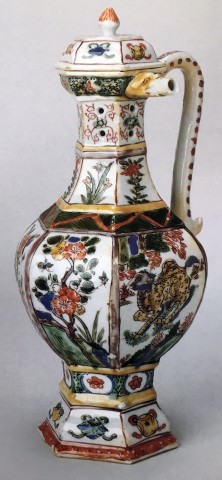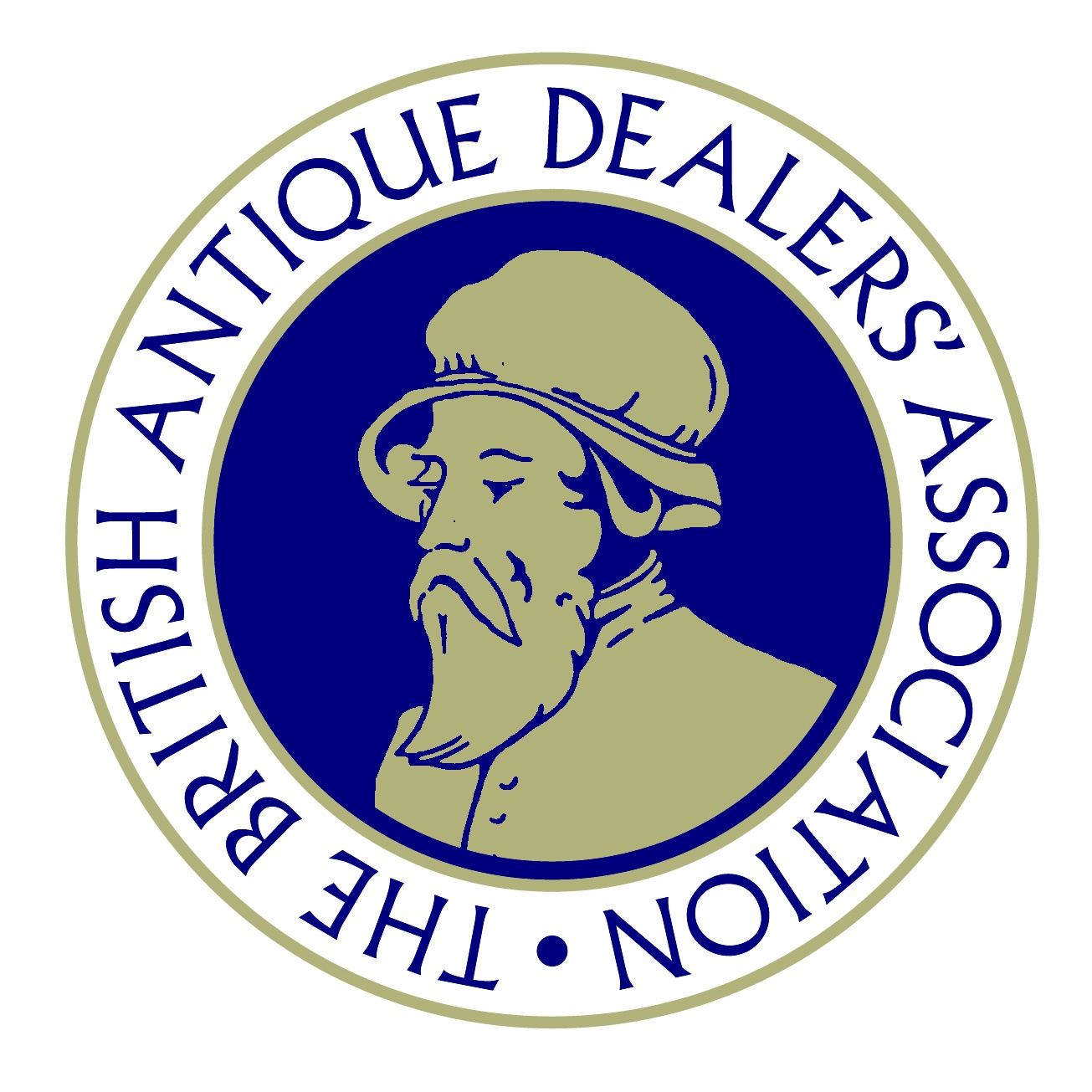Of hexagonal section, modelled after a European original. The oviform body enamelled on each facet with mythical beasts or flowers between several registers of diverse decorative bands. The shoulders with red and green chevrons, the neck with flower sprays and lotus scrolls below the ridged mouthrim which is decorated with flowerheads on a seeded green ground. The stepped foot also with a seeded band, above precious objects. The footrim with iron‑red interlacement. The serpentine handle embellished with red dots and a tubular spout issuing from a gaping animal mask.
Literature
This puzzle jug is of European form, probably based on a pottery original of the late 17th century. Puzzle or trick vessels are known in European pottery at least as early as the 15th century. One of the earliest extant examples is an Italian maiolica bowl in the Wallace Collection, tentatively attributed to Deruta, circa 1480‑90, for which see Norman, Catalogue of Ceramics 1, C23. The present upright jug form is well known in English delftware from the middle of the seventeenth century. The earliest is dated to 1653, see Lipski and Archer, op. cit., cat. no. 1009. Puzzle jugs are also known in French faience and Dutch delftware. The latter appear to be later than English versions and perhaps derived from them. Fourest in his Delftware, p. 136, no. 130, illustrates a puzzle jug made at the Old Moor's Head factory in the second half of the 18th century. In the footnote the author comments "This very common form was copied by the Chinese for the East India Company". The Chinese potter however, in this case, was not informed of the trick, and therefore made the handle solid.

